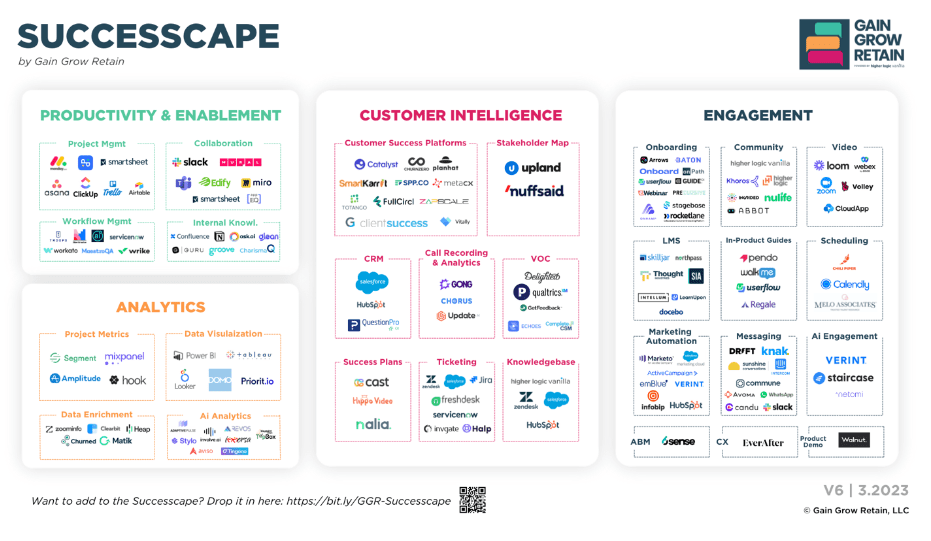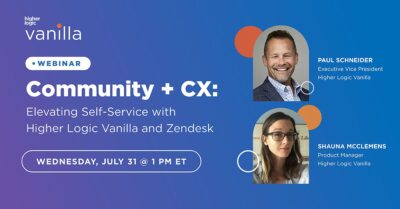
Scaling Customer Success in Enterprise Organizations
For years, the model has been ‘For every x number of customers we add, I need 1 CSM.”
This created a very high-touch, 1:1 model of customer success.
Regardless of your customer success team structure, past a certain number of accounts, a new challenge enters the strategic picture: how can we connect with hundreds of accounts?
A Successful Customer Success Organization ‘Hums’
In an organization of any size, the goals of a customer success program are essentially the same. The program delivers most powerfully for both seller and customer when the following things are happening:
- A relationship exists built on trust in the product/service, a sincere desire to provide value, and proven expertise.
- Efficient self-service systems are available, with personal touch available when desired.
- Communication with customers is consistent, targeted, and meaningful.
- Customers feel known, heard, and important.
- Customer queries are being answered quickly and on customers’ preferred communication channels.
The Challenges of Maintaining Peak Customer Success Management in Enterprise Orgs
How Many is Too Many?
How many accounts is too many for a customer success manager to effectively handle? The answer is going to be different for every business. But we all know it’s far more believable to have three very close friends than 5,680. The latter just isn’t possible by any definition of “close.”
With the vast number of customers you would find in an enterprise organization, one of two things must happen. You either have to keep adding CSMs to maintain the CSM-to-customer ratio that supports the customer success program goals above.
Or you have to leverage available technology so that each CSM can serve their accounts with greater efficiency. But what if you were able to do both?
There’s a Time to Flip the Script
In a recent episode of the Gain Grow Retain podcast, UserTesting Principal Customer Success Manager Jon Johnson talked about his move from smaller startup companies to enterprise-level customer success, and how that called for “flipping the script.”
He knew he couldn’t have 90 quarterly business reviews in a 12-month period. So, he learned to use his resources to, in his analogy, “move an entire ship instead of the individual sailors on it.”
Complexity May Not Be Required
Groundwork had to be done that didn’t rely solely on one-to-one interactions. Instead of getting overwhelmed with the perceived complexity of the situation, in as little as three weeks into the job Jon started creating a simpler process to move the metrics needle.
With numbers in the thousands, how do you learn what customers need? And how do you apply those learnings to gaps in your processes?
If you can’t get customers from zero to one on health and usage metrics, you’ll never get them to super user or advocate. And if you don’t know what the customer or customer segment wants and needs, you’ll never know how best to help them.
The result? An impersonal system.
No one wants to see their team of CSMs saying to customers, “Hey whoever you are. I’d like to meet with you because that’s what I’m supposed to do.”
Tips for Scaling Customer Success
Segmentation
How can customer success teams scale to manage enterprise-level account numbers while maintaining a deep knowledge of their customers? And how do you scale in a way that leaves customers prospering and highly satisfied?
The answer is technology-driven insights. Businesses need to create processes that move customers to the next levels of usage and value based on segmentation.
Throwing More CSMs at the Problem Can’t Be the Only Answer
The days of customer success teams scrambling reactively to address customer pain points should be behind us. When you operate reactively, customer satisfaction has already dropped by the time you address the issue. Scaled customer success sees companies leveraging digital programs that eliminate the restrictive “X number of CSMs needed for every X number of accounts” paradigm.
This is not, contrary to some fears, about the automation of everything. It’s about machines doing what machines can do! That allows human CSM resources the freedom to practice the critical thinking and relationship building in which they excel. A system like this also enables you to provide consistent customer experiences, even as different CSM team members may come and go.

Thousands of Users at an Enterprise Account is a Good Thing
Using strategic segmentation to set himself up to scale effectively in an enterprise environment, Jon began with four buckets: no usage, low usage, general usage, and super users.
He then focused on moving users through those buckets.
Enterprise organizations are well suited for this model because new users come in every day, constantly replenishing the “no usage” and “low usage” buckets.
Measuring performance need not be complicated. As Jon says, “We’re getting it done or we’re not.”
Testing
Testing is also critical to scaling customer success in enterprise situations. There’s no need to settle for low conversion rates when A/B testing can teach you what content customers want and what resources can be shifted. A/B testing yields the kind of insight that creates your secondary segmentations so processes can be scaled even further.
This groundwork of data points and reporting gives a CSM the opportunity to know exactly who to meet with. Not only that, it gives them a purpose for the meeting, knowledge of the customer’s needs and pain points, and the ability to provide value on day one. It’s a far cry from “Let’s meet because I don’t know you.”
Summary
You want to move from “vendor” to “partner.” In an enterprise-level organization, the only way to achieve that trust and sense of true partnership is through scaled customer success.
CSMs often find themselves only able to focus on whatever problem is immediately in front of them. The more strategic approach is to proactively solve a problem for three years down the road when your customer base is twice the size. Playing catch-up is a doomed proposition in an enterprise org. You must have solid processes, tools, and data to inform your decisions to keep up at scale.
As Jon attests, “Over the last year I’ve built more deep relationships with fewer people within the biggest account I’ve ever had that have moved the needle in a more mature way than any of my past one-to-one management.”
That is the kind of resource efficiency (and revenue) properly scaled customer success programs can bring.




